- Home
- Spaying and Neutering
Spaying and Neutering
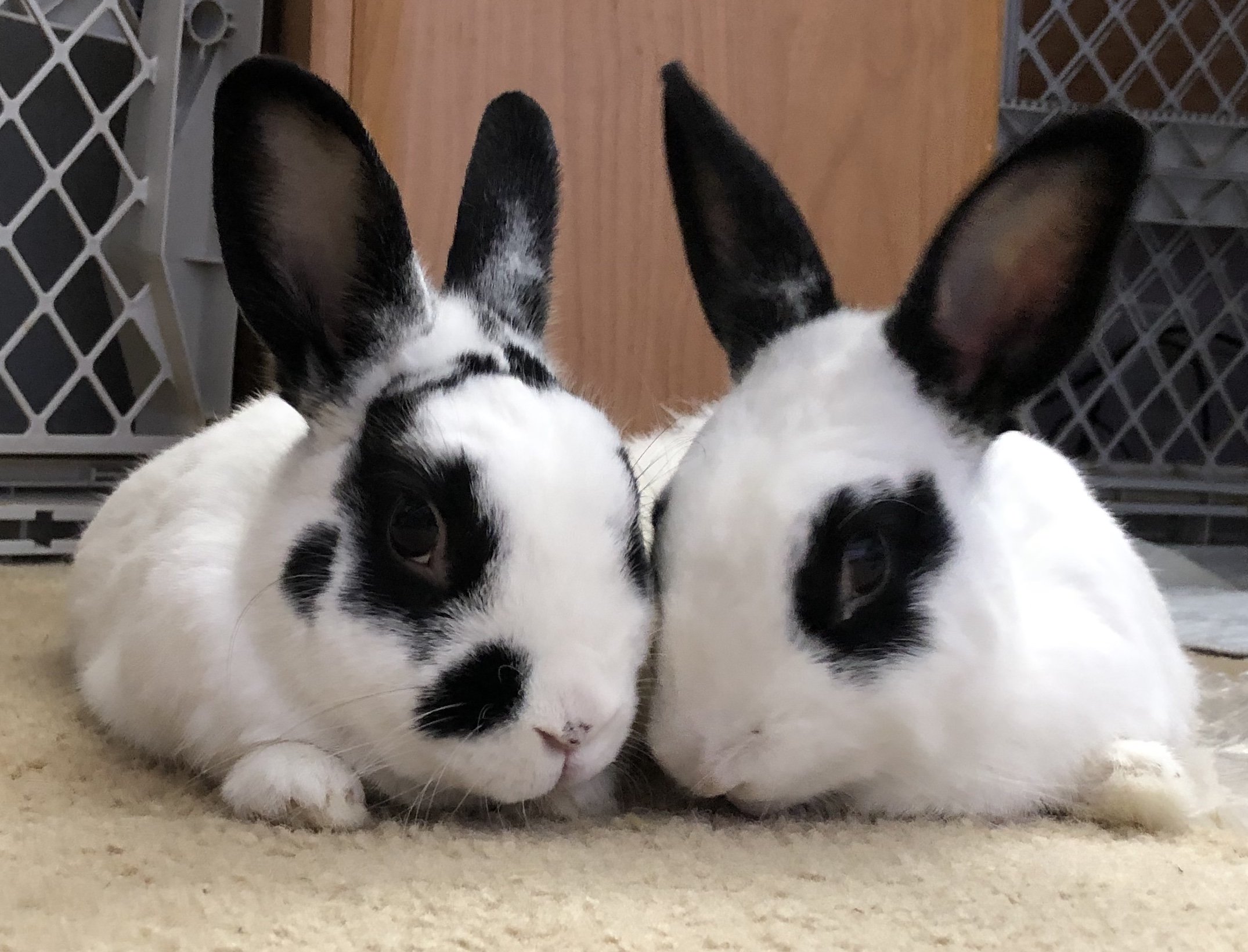 Joey and Zoe
Joey and ZoeThe information presented is for educational purposes only and does not substitute veterinarian care. This information should not be used for diagnostic purposes, for treatment of an illness or injury and never should be substituted for veterinarian care by a licensed veterinary practitioner. The Educated Rabbit cannot be held responsible for the accuracy of the information contained, nor be held responsible for any action, based on information found in The Educated Rabbit.
Seek advice from your veterinary professional for any rabbit health issues and before administering any drugs!
Spaying and Neutering Your Rabbits
Spaying and neutering your rabbits is one of the most important things you can do for them. It ensures a better bond with your bunnies, gives them a healthier life and avoids overpopulation.
Spaying and Neutering = Happy Human
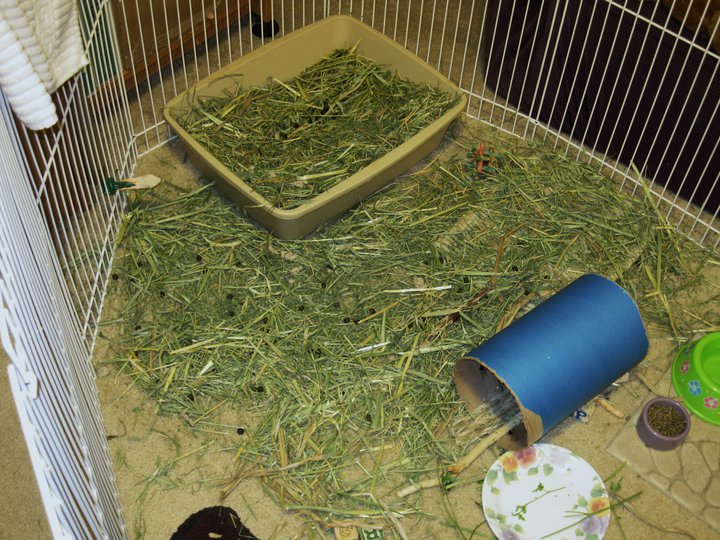 Baby Zoe was not the tidiest of bunnies.
Baby Zoe was not the tidiest of bunnies.If you go to your local city or county shelter, you may notice that most rabbits available for adoption are younger rabbits. Often they range from a few months to 1 or 2-years of age. Very rarely have I seen a senior rabbit at one of these shelters.
There are several reasons why a rabbit may end up in a shelter - stray, hoarding case, owner surrender, etc. One of the main reasons an owner may surrender is that they have found out that their sweet baby bunny has turned into a bit of a monster (see photo above). Some of these traits include the following:
- Not using the litter box
- Aggression and biting the owners
- Growling and/or boxing
- Spraying urine
- Fighting (if there are two or more bunnies present)
- Honking and Circling
- Fur pulling and nest-building
- Mounting
The first five actions listed are territorial behaviors, while the last three has more to do with reproductive urges. All of these behaviors are determined by the hormones that are produced at about 4-months of age.
Note: The vast majority of unspayed and unneutered rabbits will display one or more of the above traits. However, sometimes you may run across a special rabbit who has fastidious litter box habits, is even-tempered and always eager for a good snuggle on the couch. This is highly unusual. In the hundreds of rabbits I have met over the years, I have met only a half-dozen or so intact rabbits who did not display typical hormonal behaviors.
As you can imagine, an aggressive animal who sprays urine on your floor, walls and even you is not an ideal pet. Many people do not know that spaying and neutering eliminates most of these behaviors within a month after surgery when the hormones settle down. The result is improved litter box habits and reduced territorial aggression.
Spaying and neutering not only improves the bunny's relationship with you, but it also prepares him for the possibility of having a bunny friend of his own. Trying to get two intact rabbits to share the same space is like inviting all out warfare to take place in your living room. This is because rabbits - even though they like to live in groups - are extremely territorial. Spaying and neutering reduces the territorial behavior and allows for two or more rabbits to live together in harmony (personalities willing).
A Healthier Bunny
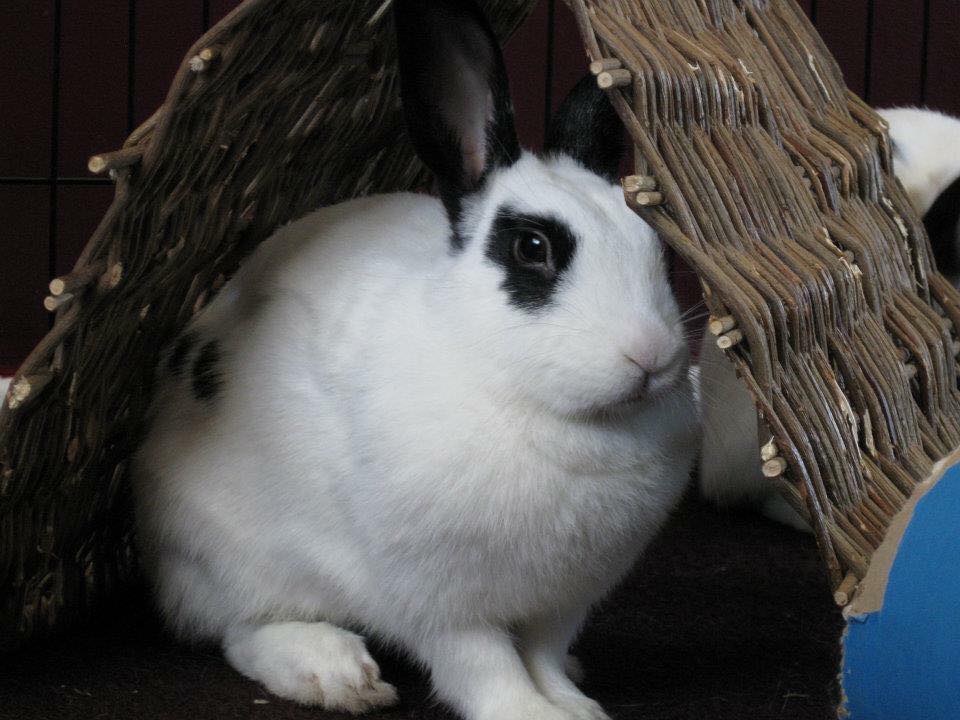 Zoe is over 11-years-old. If she wasn't spayed, it would be unlikely she would still be alive today.
Zoe is over 11-years-old. If she wasn't spayed, it would be unlikely she would still be alive today.Spaying and neutering improves your bunny's health, especially for females. A typical unspayed female rabbit has an 80% chance of developing uterine adenocarcinoma (an aggressive form of uterine cancer) before the age of 5-years-old. There is also a higher risk of cancer in the mammary glands. Both these cancers and other reproductive diseases and disorders can be reduced - if not completely eliminated - with spaying.
Intact males can develop testicular cancer, although it is not as common as females developing uterine cancer. Neutering will eliminate this risk.
Overpopulation
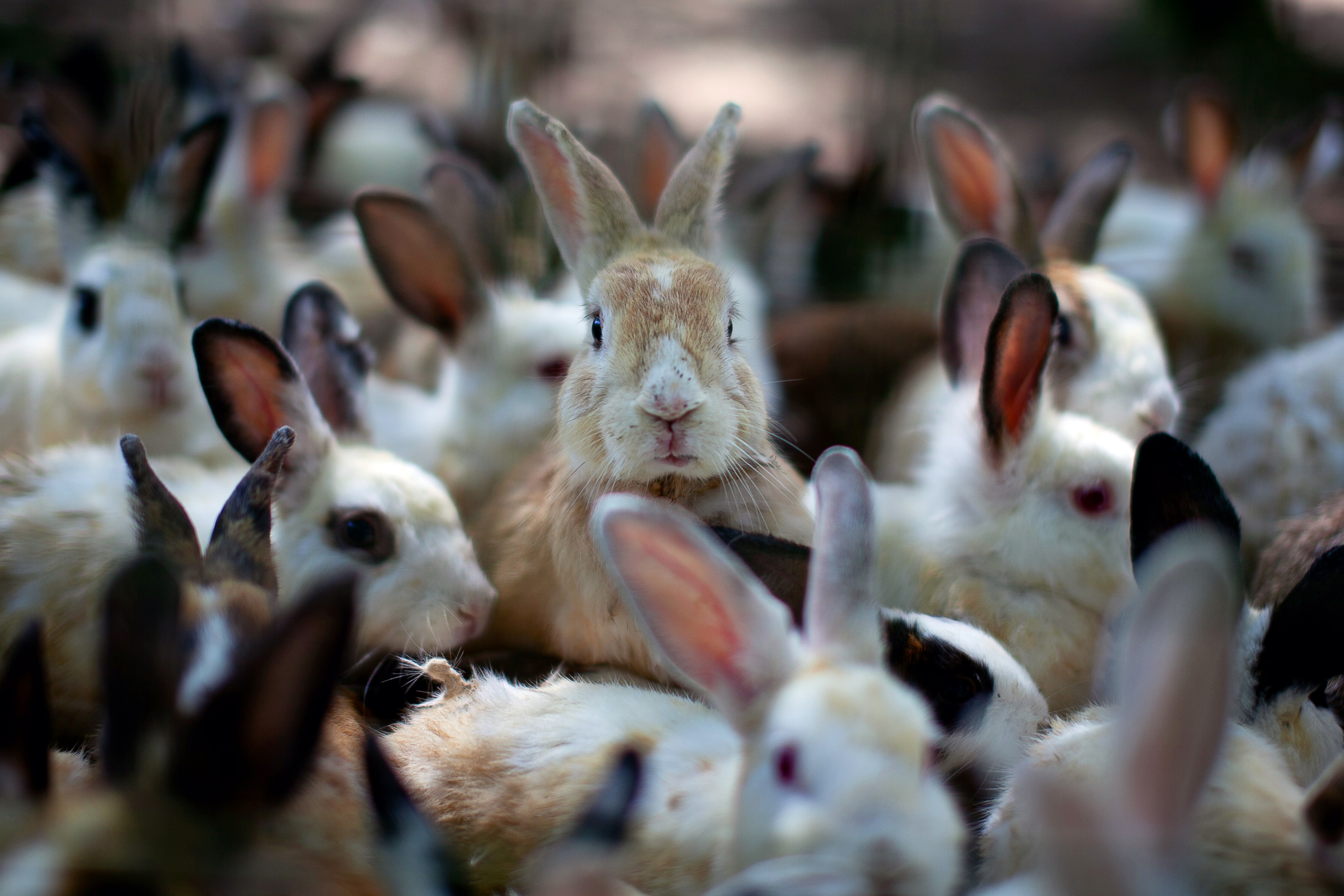 Photo by Ty Lim|Shuttershock.com
Photo by Ty Lim|Shuttershock.comFor most people, the driving reason for spaying and neutering is reproduction. There are a couple of reasons why this concern should be a priority for all owners.
- Determining sex. It can be surprisingly difficult to sex bunnies, especially babies. Even veterinarians can have problems. I've met many owners who were suddenly faced with a surprise litter ("I was told they were both girls!").
When I encounter baby bunnies, I will take a quick look to see if I'm holding a boy or girl. I'm looking for either a slit (female) or a cone (male). Rarely does it look obvious. Usually about 8-weeks, the genitalia becomes more defined. However, I'll usually continue checking a few more times for the next couple of weeks until I'm sure.
This is why if breeders or salespeople in the pet store tell you the baby bunny you are holding is a male (or female), I would take it with a grain of salt. - Lots and lots of babies. It really doesn't take a long time for a couple of intact rabbits to become a problem. Litters can be 1-14 kits with the average being about 6. Gestation is 28-31 days and females can become pregnant again immediately after birth. In one year, you can find yourself caring for hundreds of rabbits. This accelerated reproduction rate is typical for prey animals to ensure their species survives predation.
Overpopulation is a serious concern. Every year, city and county shelters, along with local rabbit rescues, have to deal with hoarding cases. Most hoarding cases deal with several hundred rabbits. All of those bunnies need medical care, transport, food and shelter. Both shelters and rescues have limited money, space and knowledgeable volunteers available to foster. It can take years for rescues to find homes for every bunny and some bunnies spend their whole lives in a rescue, becoming sanctuary bunnies. This does not include the thousands of rabbits that are surrendered to local animal control for a variety of reasons every year or the countless rabbits living (or dying) as strays on streets and parks. The euthanasia rate for healthy, adoptable bunnies is high. Rescues are always overwhelmed.
In this environment, it would be inhumane to purposefully breed your bunny because you want to see babies or you want to show your kids the miracle of life. Ask yourself, if my bunny had 14 babies, do I have 14 good homes lined up? Will these bunnies be taken care of or will they end up as snake food or even people food? Worse, will they be abused? If it doesn't work out, can I take the babies back? Am I prepared to take care of 14 extra babies plus the parents?
Is it right for 14 other healthy and adoptable rabbits to miss their chance at a good home (and potentially be euthanized) for my baby rabbits? These are important and valid questions to consider and answer honestly. Save a life and spay and neuter your bunnies.
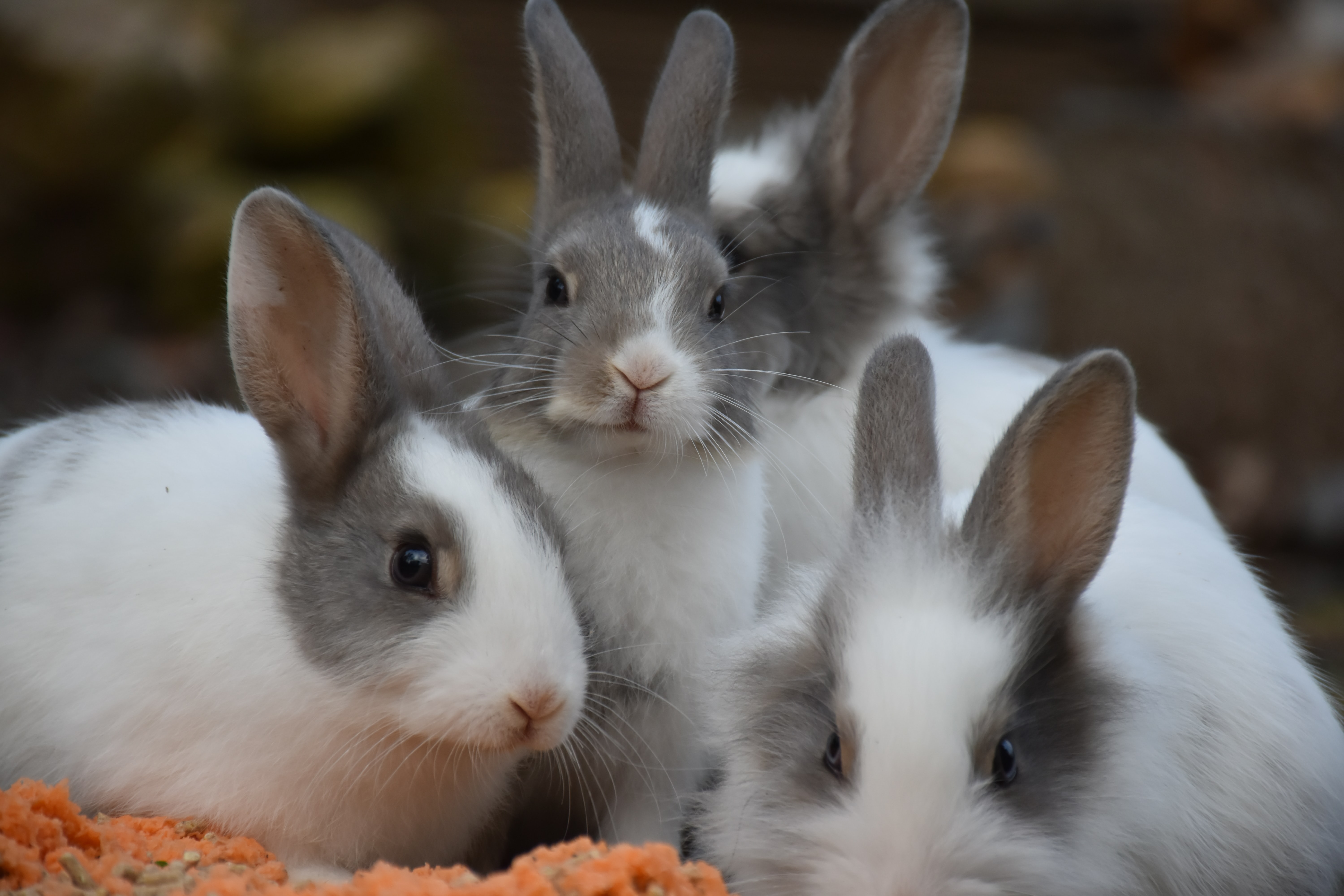 Photo by Peyman Toodari on Unsplash.
Photo by Peyman Toodari on Unsplash.When to Spay and Neuter
Typically, young rabbits are sexually mature between 4-6 months; 5-8 months for larger breeds. However, sometimes males can drop their testicles around 3-months. That's why I start thinking about separating the litter when the kits are around 3 to 3.5 months-old.
Once males are neutered, it is important that they are kept away from any intact female at least a month after surgery. Males have a reserve of sperm that is still active for 3-4 weeks after neutering. After this waiting period, they can be reintroduced.
Females should not be spayed younger than 4 months. A spay is a more invasive surgery, requiring the vet to make an incision in the abdomen to completely remove the ovaries and uterus. The organs need to be developed enough for a vet to see and avoid damaging the intestines.
Also, hormones are important for body development. Removed too early, the bunny may have issues with bone density loss later in life.
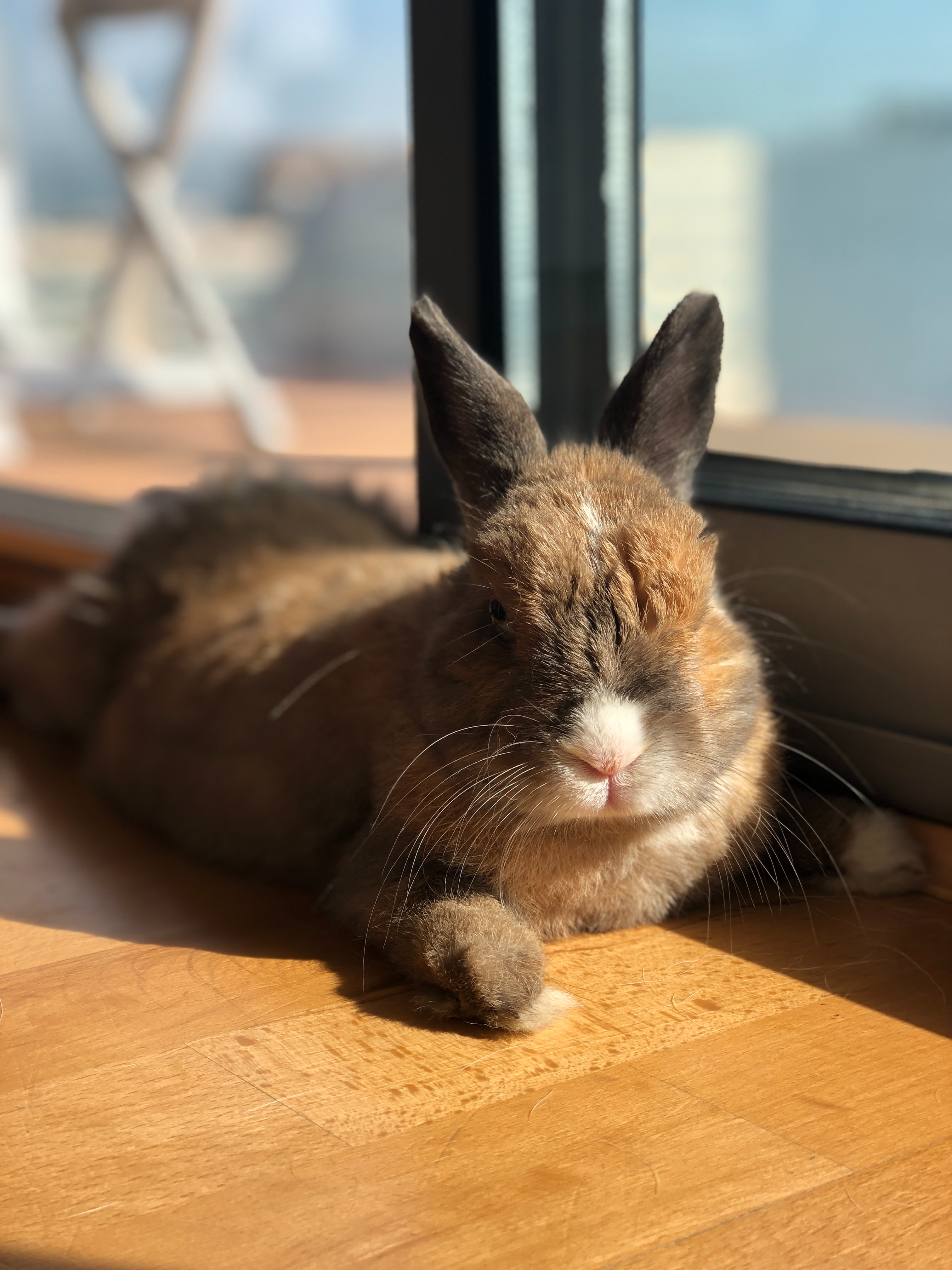 Photo by Amparo Molins Beltran on Unsplash.
Photo by Amparo Molins Beltran on Unsplash.Surgery should only be done by a rabbit-savvy veterinarian. However, there may be a few low-cost spay and neuter clinics in your area that will take in rabbits. A low-cost clinic may be ideal if you find yourself with a surprise litter.
Spay and neuter surgeries are routine for any veterinarian and are normally done quickly. A rabbit should never be fasted before surgery.
Typically, a male rabbit will return to eating the next day. Females usually take a few days longer to feel back to normal. Pain medication should be given for a few days after surgery and the incision site should be inspected.
Complications can include an open wound (more of an issue if the incision was glued and not stitched), swelling, redness, bruising, bleeding or any other discharge. In such cases, consult your vet.
Further Reading
Brown, S. 2011. Neutering Rabbits is Best. Veterinary Partner - VIN
Krempels, D. 2006. Why Spay or Neuter My Rabbit? Some Scary Numbers... H.A.R.E., Inc.




